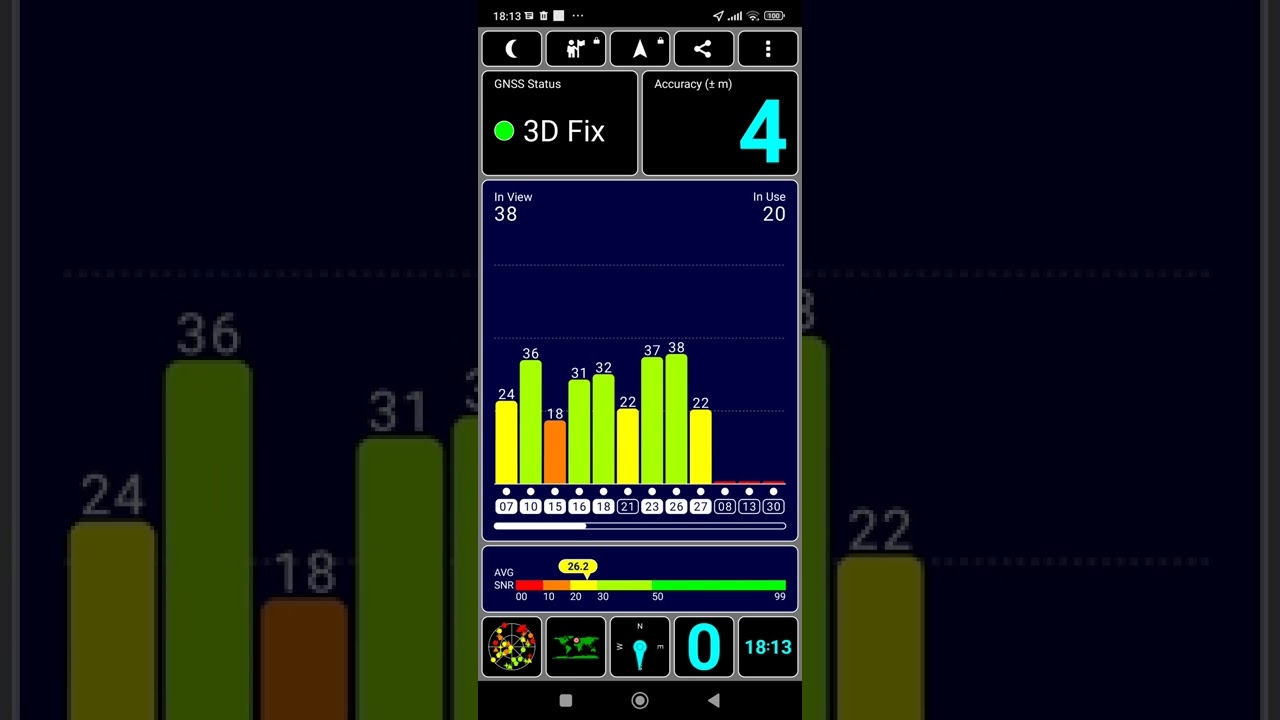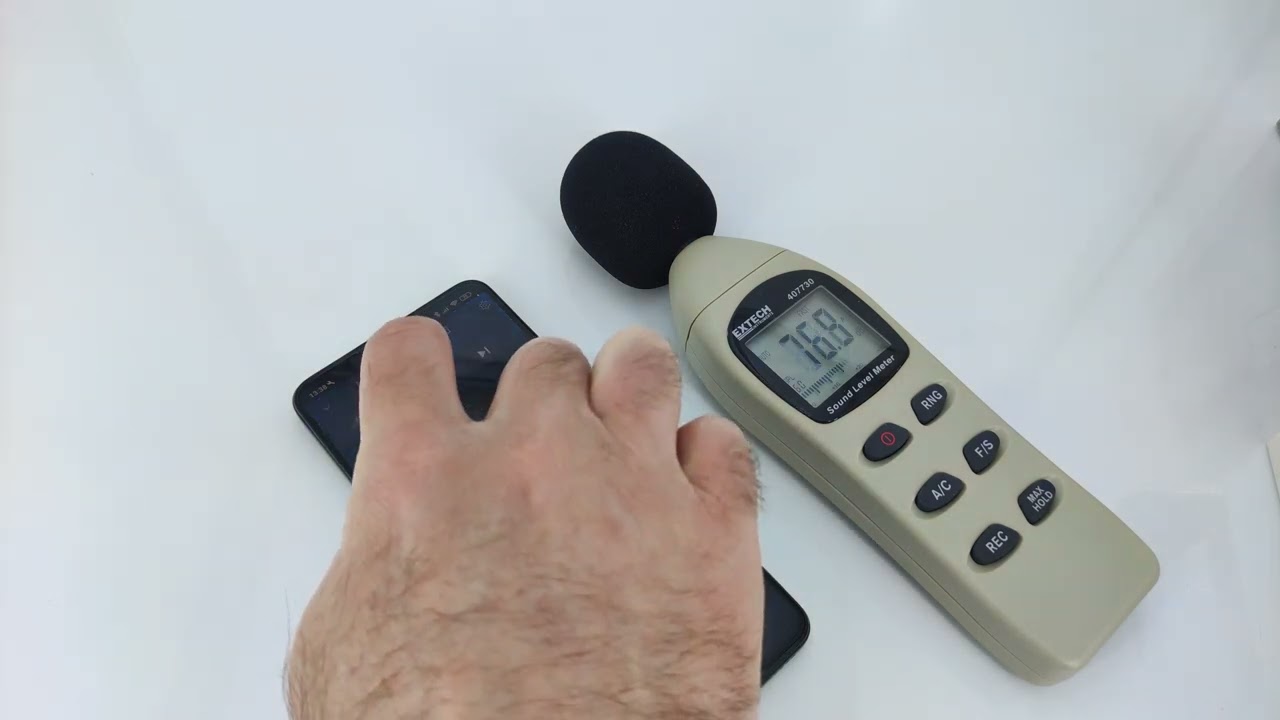Smartphones
Poco X4 Pro 5G : test / review
Published on: 01-03-2022 / Modified: 11-12-2022
Poco markets three series of telephones each time with a letter to indicate which product range it is. The M range is to be considered as the entry level, the X range as the mid-range and the F range as the top of the range. Each of these ranges is then divided into a normal model and a pro version. I am going to test the Poco X4 Pro today, so we are in the mid-range at Poco with a pro version which is usually more muscular than the normal version but at the time of this writing, the normal version n doesn't exist yet.
The Poco X4 Pro succeeds the Poco X3 Pro which had a huge success last year, this X3 Pro offered an absolutely incredible price / performance ratio and this phone was able to seduce a more public wider than the gamer audience that Poco had originally targeted. So I had to test this Poco X4 Pro and I ordered it on Goboo in presale for 249€.
Launch offer
The Poco X4 Pro will be marketed at a price of 279€ but on the occasion of the launch, Goboo is selling it at 249€. Goboo is an official representative of Poco/Xiaomi in Europe, they are based in Spain and therefore offer a 2 year warranty and free return within 14 days. To enjoy it like me, here is the link:Poco X4 Pro at Goboo (limited quantity, so don't delay too much)
Manufacturer web site:
https://po.co
Site where I have bought the Poco X4 Pro:
https://s.zbanx.com/...
Structure of my tests
I test the phones according to a pre-established structure (see below) to provide you with as much information as possible. Unfortunately, this takes a long time. Some tests like network performance tests take several days and for photo tests I sometimes have to wait until the weather is suitable to take pictures in good conditions. I am therefore obliged to publish the tests step by step, so I invite you to come back if the test is not complete at the time of your visit.Price Poco X4 Pro
The list below shows the prices for the Poco X4 Pro from more than 50 sites around the world. If you are not satisfied with any price, you can subscribe to a price alert to be the first to be notified when the price drops.The above links are affiliate links from companies such as Amazon, Gearbest, Aliexpress,... If you appreciate my work, I would be grateful if you could purchase these products through these links. It costs you absolutely nothing but I get a small commission that allows me to buy the material I test. Thank you very much!
Timeline
02/28/2022: purchase of the Poco X5 Pro 5G on Goboo.com in presale03/11/2022: I received the phone, the test can begin
Why this phone?
I've bought just about every Poco model released since 2020, but the only point of comparison with the Poco X4 Pro is its predecessor. This phone is always ranked in the top 10 of the best phones I have tested, while other more expensive candidates have measured up to it without being able to surpass it. Poco has so far managed to deliver great value for money without alienating a more mainstream audience. The challenge to dethrone the X3 Pro will be difficult to meet because this new Poco X4 Pro changes the performance slider downwards, it will be necessary to look for the difference on other factors.The Poco X4 Pro will therefore be less powerful than the previous model, the battery will be slightly smaller, the memory will also be a little slower, so one might wonder why one should orient oneself to the Poco X4 Pro? I will try to provide the answer in the article but I see some answers in its technical sheet.
The Poco x4 Pro has an Amoled screen against an IPS LCD with the previous model, the photo sensor increases to 108 million pixels and although this is not proof of quality, the quality photo could also be better. We must also add 5G, faster charging, probably better autonomy because the CPU will be less greedy. Here are a few points where this new Poco x4 Pro could stand out.
Unpacking
First configuration
The Poco X4 Pro runs on MIUI 13, so the setup procedure is exactly the same as the brand's other phones. With Poco, you do not have to go through the Xiaomi cloud registration screens but on the other hand the phone will offer you to activate dynamic wallpapers which will have the effect of sharing data with the Taboola advertising platform. You have the right to refuse.Finish
As I wrote above, this Poco X4 Pro is a clone of the Redmi Note 11 Pro but I find that it has a less premium side than the Redmi but that's a very staff. On the other hand, the format which imitates the lines of the iPhones works as well as with the Redmi.
Specifications
The information below comes from the Device Info HW application. The application provides detailed technical information about the tested phone. I tested the 6Gb / 128 Gb version of the Poco X4 Pro. You will find all the technical characteristics of this one in the screenshots below.
I noted the following:
- wcn3990 wifi chip, I tested it many times with good results
- screen identical to Redmi Note 11 Pro
- 6Gb of base ram
- Widevine L1 support for HD streaming
CPU / GPU Performance
The Poco X4 Pro runs on a Qualcomm architecture with a Snapdragon 695 CPU (like the Redmi Note 11 Pro 5G, Realme 9 Pro, Motorola Moto G71 5G or the Oppo A96 5G). It is also equipped with an Adreno 619 GPU which will place this phone in the mid-range but I would even say the top of the mid-range because this level of performance is going to give it a high level of comfort. You won't find many apps that will put this phone in trouble. The wifi, 5G, GPS, Bluetooth performance should be similar to the other phones mentioned in this paragraph as they all use the same components. It is therefore not on the technical part that you will be able to distinguish these different phones.
Benchmark Antutu/3DMark
I got a score of 329303 with this phone, that's significantly less than what I got with the Poco X3 Pro. Why? I suppose that the performance of the X3 Pro was too high for this price segment and that ultimately, except for a limited audience, this extra performance is not of much use. Choosing a less efficient CPU / GPU should have a positive impact on battery life, which is arguably a more important criterion than raw performance.Gaming
To test the performance in game, I download the mobile PUBG game and evaluate the in-game experience, graphics level and depth of vision. This game is quite demanding and should help you evaluating the performance of a phone.

Network performance
The Poco X4 Pro covers all the frequencies used in Europe, it covers 13 frequencies in 5G and despite this opulence, the Redmi Note 11 Pro covers one more frequency (n66). For 4G it's the same, the Redmi Note 11 Pro supports 3 more frequencies: B13 700, B32 1500, B66 1600/2100. This shouldn't be a problem in Europe, but remember to check the frequencies used by your service provider.Signal 4G (from December 2020)
I decided to change the methodology for measuring the network because I noticed that the configuration of the mobile network changes over time. This makes it more difficult to compare phones because the conditions are no longer exactly the same.
To overcome this problem, I set up a device that captures 24 hours a day about ten parameters from the mobile network (ex: cell id, rssi, rsrq, snr, frequency,...). I then place the phone next to the device for 24 to 48 hours taking the same measurements so that I can compare them.
Overview of the phones tested with this methodology
While retrieving network data from Poco X4 Pro, I was a little surprised by the result because the network performance was worse than that of Redmi Note 11 Pro while these two phones are identical. The explanation is actually very simple, the Redmi Note 11 Pro I tested was a 4G version that uses another type of modem.
I performed 562 measurements to assess the mobile network sensitivity of this phone and I obtained an above average result. I got an average signal of -94.01 dBm with the phone and -92.06 dBm with the probe, so the difference is quite small. The Redmi Note 11 Pro 4G had obtained a better signal by even doing better than the probe. We should not worry about it, this result still classifies the Poco X4 Pro in the high average.
Download/Upload speed
To test the download speed, I have identified some 4G cells offering good performance where I test all my devices several times to see what download and upload speed they can achieve.
Wifi performance
To test a phone's ability to receive the network properly, I take measurements near my router and then remotely (and always at the same place). This gives me an average in dBm where a value of -90 dBm indicates poorer performance than a value at -30 dBm.Wifi signal
The Poco X4 Pro uses the same wifi chip as in many other phones I've tested and I've almost always had good results with this chip. I will however temper my enthusiasm with this phone because even if the result obtained is not bad, it is a little below the average of other phones using the same hardware. I got an average signal of -17 dBm near the router and -65 dBm at a distance. I also noticed that even being close to the router, the phone forced the switch to the 5Ghz frequency. This is not a problem in itself because the speed in 5Ghz is higher. The 2.4Ghz signal quality was worse even near the router, something I hadn't noticed on other phones using the same hardware.
Download/Upload speed
To test the speed in Wifi, I connect to my router in 2.4Ghz and 5Ghz (if available) and use the Ookla application to measure the speed.
GPS performance
To test the accuracy of the GPS signal, I use two positioning applications to evaluate the difference between the actual position and the position indicated by the phone. This test is done outdoors with nothing to obstruct the signal. An accuracy level of up to 3 meters can easily be corrected by an application (e.g. Google Maps).

Battery range
To test battery life I developed an application that measures the battery level minute by minute until the battery is empty. This application consumes about ten percent of the phone's resources and I do a test with 100 brightness. This test aims to reproduce a contemplative use of a phone (e.g. surfing the internet, reading articles, spending time on social networks). These results are not valid for intensive gaming/streaming use. The Poco X4 Pro has 67W fast charging that charges the phone from 0-100% in just over an hour. This charging is not linear, the charging speed slows down very sharply after 80%. It takes 12 minutes to reach 20% battery, 42 minutes for 80% but the last 20 percent requires almost 30 minutes.Energy performance
With the CPU at 100%, I get a consumption of 4.4W and -1A
With the GPU at 100%, I get a consumption of 2.3W and -0.49A
With the NPU (int8) at 100%, I get a consumption of 1.8W and -0.39A
With the NPU (fp16) at 100%, I obtain a consumption of 2.5W and -0.6A
By cutting all the processes, I have an estimated consumption of 0.6W for the screen ( black background).
I don't yet have enough perspective on energy performance tests to compare them, it will probably take me a few months to collect enough data.
Photo camera test
To test the quality of photos produced by a phone, I do a technical test (resolution, sharpness, chromatic aberration,...) in studio (identical conditions) to evaluate the technical part objectively. From the second half of 2020, I built my own laboratory to take completely objective technical measurements. I then take pictures in real conditions to see how the camera performs. I then evaluate these photos according to my criteria but I publish the photos so that you can evaluate the result according to your criteria.Hardware
The Poco X4 Pro uses the 108MP Samsung S5KHM2 sensor as its main sensor. It is a sensor that I have already had the opportunity to test on several phones such as the Redmi Note 11 Pro or the Redmi Note 10 Pro. This sensor is a good mid-range sensor, it is capable of producing good photos for this price range but don't let the pixel count fool you as other sensors do better with fewer pixels. I also noticed that the RAW mode was not activated.For the ultra-wide-angle sensor, the Poco X4 Pro uses the popular Sony IMX 355 that I've tested many times in other phones. Although this type of sensor cannot produce excellent quality photos, this one does better than the others.
Photo quality
Photo quality (indoor/studio)
The studio test is carried out under the same conditions so that the results can be compared on an equal basis. I calibrate my lighting for each test to obtain the same brightness and colour temperature. This test is a preliminary analysis of the technical qualities of a camera. Most phones fail this test, so you should also read the results of the other tests in the following paragraphs.
Samsung S5KHM2 / 108 million pixels
The Samsung S5KHM2 is a good mid-range sensor, it doesn't have any major flaws, it sometimes makes the wrong auto level choices when the light is very strong but in the together it produces good photos.
Sony IMX 355 / 8 million pixels
Photo: technical test
I was inspired by industrial technical tests to create my own technical test to evaluate the technical quality of a camera. This test is an objective assessment of a camera's ability to render a scene correctly.
I test the following elements:
- centre sharpness, peripheral sharpness
- colour fidelity based on 24 reference colours
- level of chromatic aberration
- dynamic range (ability to capture dark and light areas without loss)
- distortion
The technical evaluation may differ from the subjective evaluation as the feeling of a photo will be influenced by the processing provided by each manufacturer.
Samsung S5KHM2 / 108 million pixels
The Samsung S5KHM2 is a good mid-range sensor, it doesn't have any major flaws, it sometimes makes the wrong auto level choices when the light is very strong but in the together it produces good photos.
Sony IMX 355 / 8 million pixels
Outdoor photo quality
Samsung S5KHM2 main sensor / 108 million pixels
This phone is compatible with the Gcam application and I took the opportunity to make comparison photos to see if Gcam could improve the photos. The answer is yes. You can compare the following photo with the first one in this paragraph:
As I wrote above, this sensor is a mid-range sensor, it produces above-average quality photos but in this price range, I find that the Samsung GW3 (Xiaomi Mi 11 Lite) and the Sony IMX 682 (Poco X3 Pro) do better.
Photos taken with Samsung S5KHM2 and default photo app: Photos taken with Samsung S5KHM2 and GCAM:
Sony IMX 355 / 8 Megapixel secondary sensor
Test photo / night
Not yet available / tested
Video quality
Stabilisation

Video normale conditions

Video low light
Not yet available / tested
External audio quality
This test is intended to give you an overview of the volume and sound quality during calls and when listening to music through the external speakers.

Music on external speakers
The Poco X4 Pro produces good quality sound that is quite comparable to what is found in this price range, I do not observe any difference with other phones such as the Redmi Note 11 Pro for example. The bass sounds lack a bit of depth and the treble lacks a bit of finesse, but in this price range that's normal. The volume is average.
Calls on external speakers
The sound level with the listening speaker for calls is not very high, it is a little below average. The sound, however, is of good quality. With the external speaker, the sound volume is above average and the sound is a bit too high-pitched.
Audio quality (headphones)
To test the quality of the phone's audio output, I connect the device's audio output to a measuring tool, then play sounds on all frequencies and measure the differences between the original sound and the sound produced by the phone. In this way I measure the phone's ability to correctly reproduce all sounds.Screen quality
To test the screen, I use a colorimetric probe that measures the color accuracy of a screen, as well as other parameters to see if a screen is able to correctly reproduce an image. I also test the brightness level to determine if the screen will be able to display an image in full sunlight.Colorimetry
Brightness / Contrast
I measured a brightness of 661 cd/m² in "sun" mode, it's the same as on the Redmi Note 11 Pro because it's the same screen. With this level of brightness, you will be able to use this phone in direct sunlight.
The contrast is infinite thanks to the use of amoled technology, the blacks are therefore truly black and your images will therefore have better depth than with an IPS screen. This screen also has a frequency of 120hz (by default 60hz) which will give you perfect fluidity. Viewing angles are also excellent, you can look at the screen from the side without losing image quality.
Biometry
The Poco X4 Pro uses a fingerprint sensor located on the power button like the Redmi Note 11 Pro and this sensor works very well, I think Xiaomi has found the best solution for their phones because I find it difficult to return to something else on other phones.Operating system
The Poco X4 Pro runs on MIUI 13 and therefore basically resumes the operation of Redmi and Xiaomi. I quite like MIUI because this interface is much richer than the standard Android interface, but this interface is often criticized for the presence of unwanted ads and applications. I know some people are genuinely allergic to it, it's never been too much of a problem for me, I've never been inundated with advertisements.
Encoutered bugs
Not yet available / testedAccessories Poco X4 Pro
Compare Poco X4 Pro with the others
Test / Review conclusion
The Poco brand had returned to the market in 2020 positioning itself very strongly on performance and in just a few months it had managed to position a phone in all price ranges by offering the best performance for each segment. Poco had probably done its job a little too well because the difference in performance with the competition was sometimes really very significant and this Poco X4 Pro seems to want to calm things down because it is less powerful than its predecessor the Poco X3 Pro. A less powerful Poco? Yes and that's not the only regression but I bet a majority of buyers won't see the difference. The Poco X4 Pro is a different phone, you have to see it as a Redmi Note 11 Pro that has disguised itself as Poco.
The Poco X4 Pro is a good mid-range phone, it doesn't have any major weaknesses but it won't stand out dramatically either. This phone will probably appeal less to gamers, but for others, the performance will be more than enough for everyday use and even for most games.
The Poco X4 Pro has good network sensitivity, good wifi sensitivity with good download speed, so it has everything you need to ensure comfortable use daily. The battery also offers good autonomy and fast charging at 67W is still quite rare in this price range.
For the photo part, the Poco X4 Pro uses the same sensors as the Redmi Note 11 Pro, Redmi Note 10 Pro and Redmi Note 10 Pro Plus 5G. No novelties on this side but this sensor delivers good results and in this price range, it is undoubtedly positioned among the best. Only certain Sony sensors or the Samsung GW3 produce better photos, but the phones that use them are often more expensive. I regret, however, that it is not possible to film in 4k because this phone should in theory be able to do so.
This Poco X4 Pro ticks a lot of boxes to meet the expectations of a fairly large audience wanting to buy a phone for less than €300. It does not revolutionize the world because it takes almost all the characteristics of other phones from the Xiaomi group, but to find something equivalent in other brands, you have to pay more. Poco has therefore somewhat lost its price/performance approach for gamers, this phone is aimed more at a wider audience.
Strengths
Screen quality
Finish (better integrated photo unit)
Good battery life
67W fast charge
Photo quality
Very powerful sound through headphones
Weaknesses
Average GPS accuracy
Average call volume
Video limited to 1080p
Sound distortion at full volume
Alternatives to this product
Not yet available / tested










































Questions/Comments